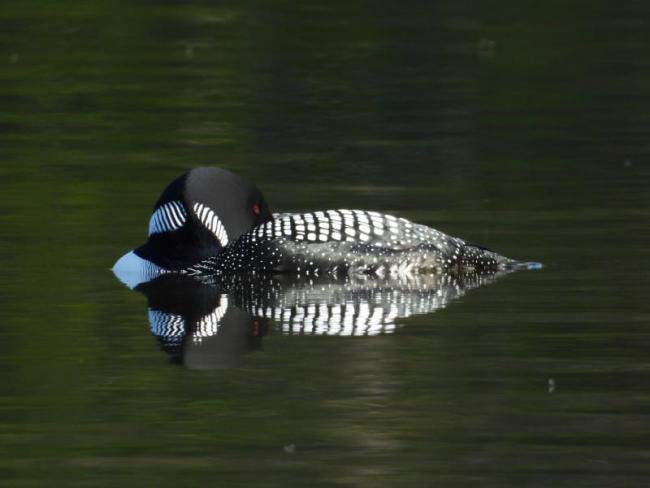Special Winter Birds: Common Loons
The Common Loon isn’t the state bird of Maine, but it may as well be. Our state, along with New England, is legendary for its loons and their mournful calls, and many people travel from far away to see them. However, you rarely see loons on lakes in the winter. If you haven’t noticed it already, you will surely notice a lack of loons now. So where do they go in the coldest season? The ocean!
In the summer, large lakes (loons need up to 1/4 mile to take off into flight) in Maine are critical to helping Common Loons breed. Lakes provide the food that loons eat and feed to their young, and they also provide a key element that oceans cannot: a steady water line. Loons need a place to nest on land that is on the water’s edge since they cannot walk well or functionally, and so therefore can’t build a nest in a place where the waterline changes throughout the day. As a result, they nest and live on lakes in the summer.
However, things change in the winter. Loons no longer have to feed babies, and have no nest to sleep in at night. As a result, they can live in and on the ocean, where there is no thick layer of ice on the top of the water and there is an abundant supply of fish. A bird that joins the Common Loons on the open ocean in the winter is the Red-throated Loon. It is typically only in Maine in the winter, and only on coastlines. They summer in the Arctic, so they come to Maine in the winter for a warmer stay than they would have in their summer homes.
I hope you are able to see these interesting birds in action (Belfast Harbor is a good place in the winter), and are more aware of where they are when and why. Happy birding!
United States




























